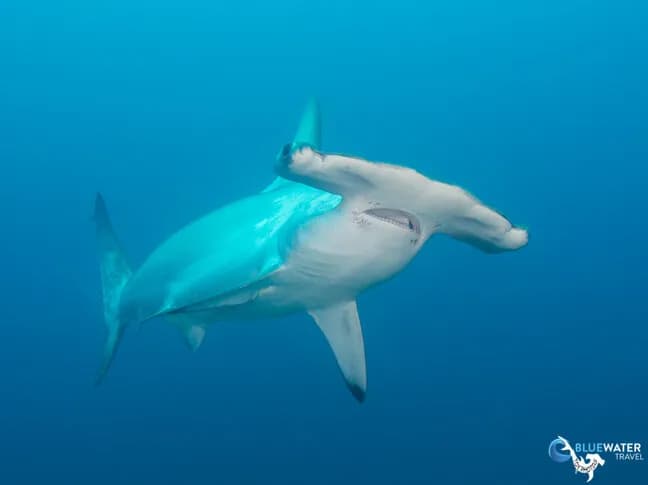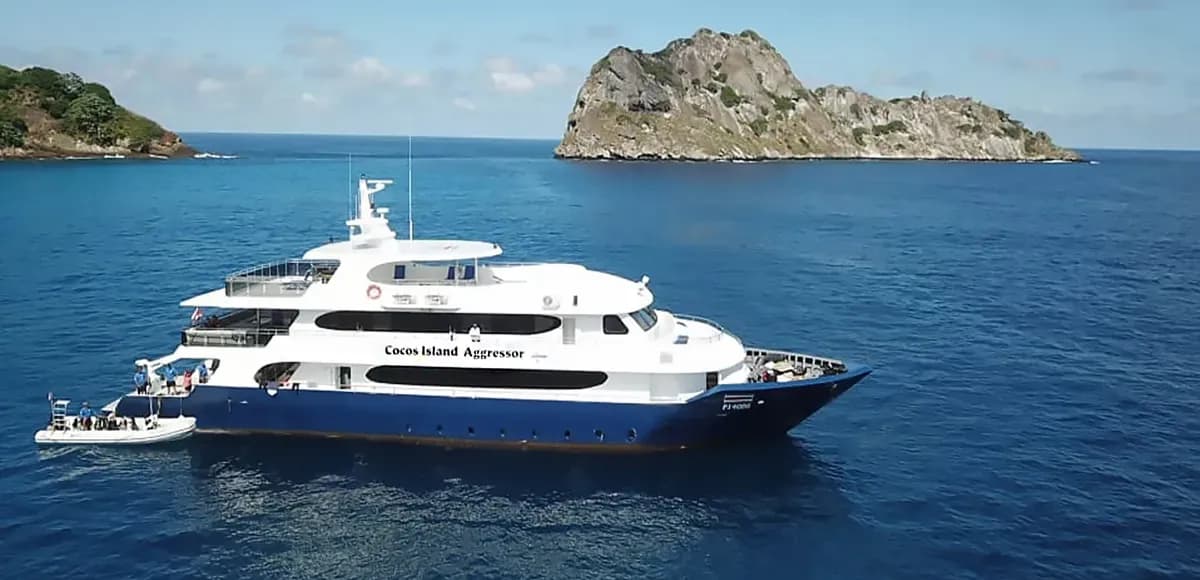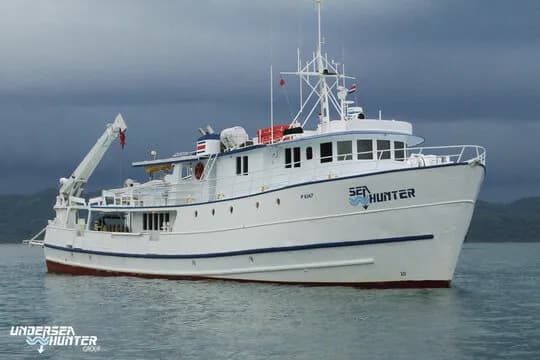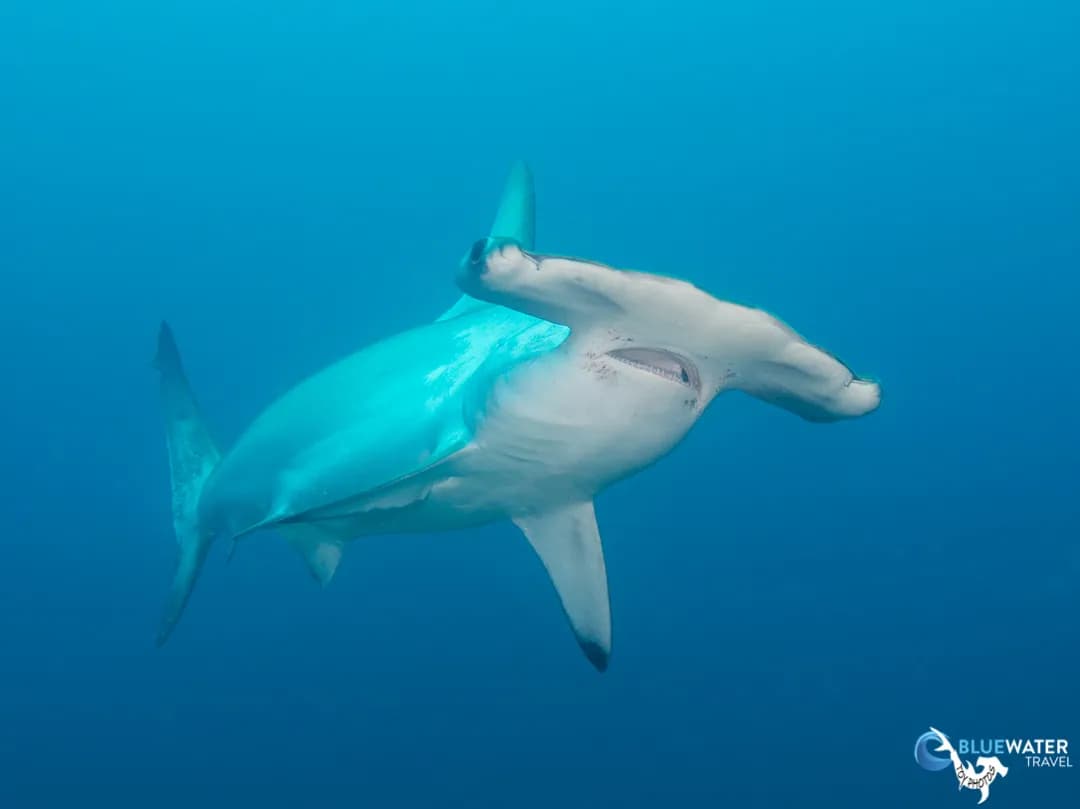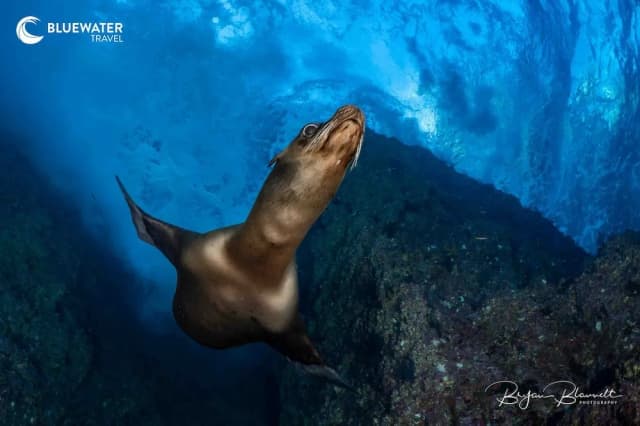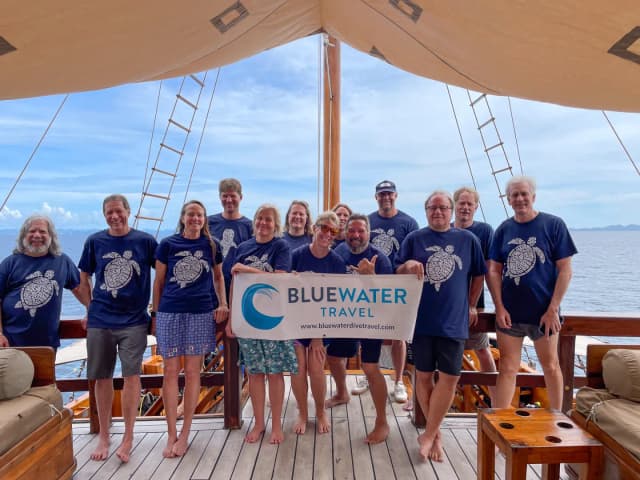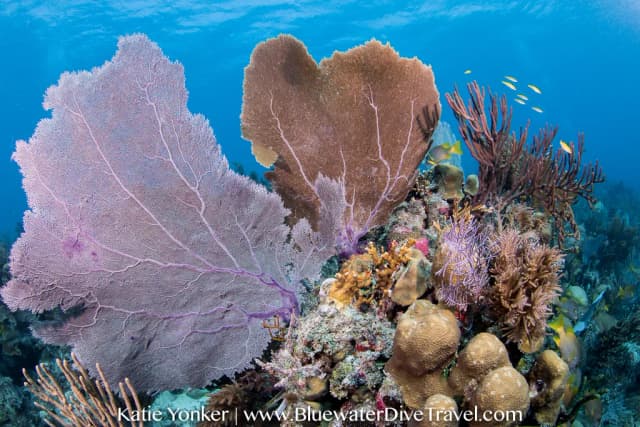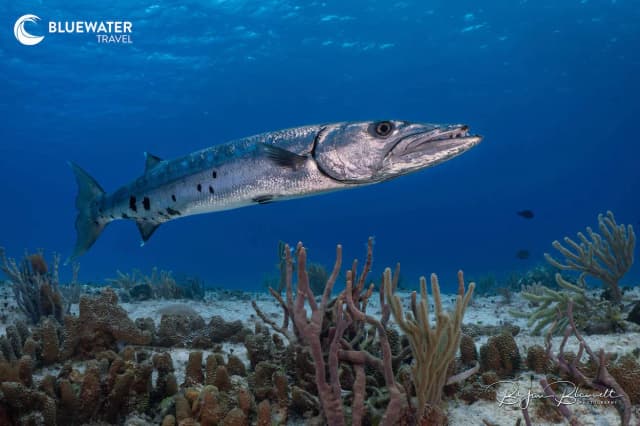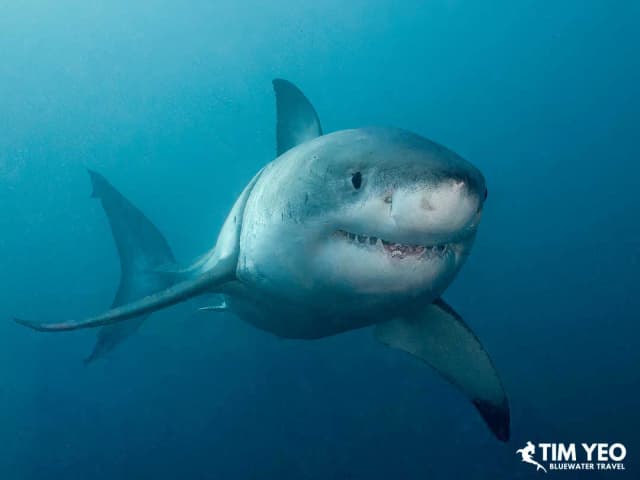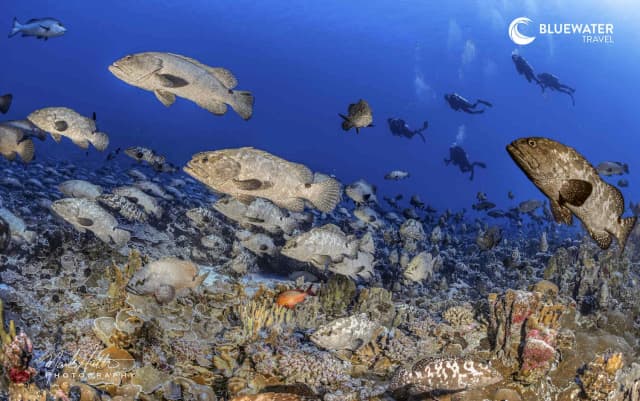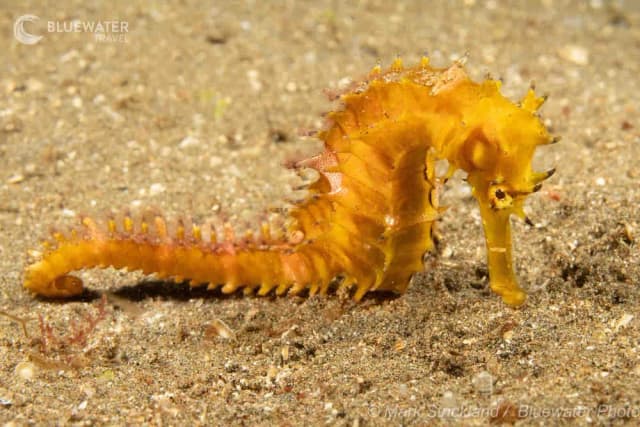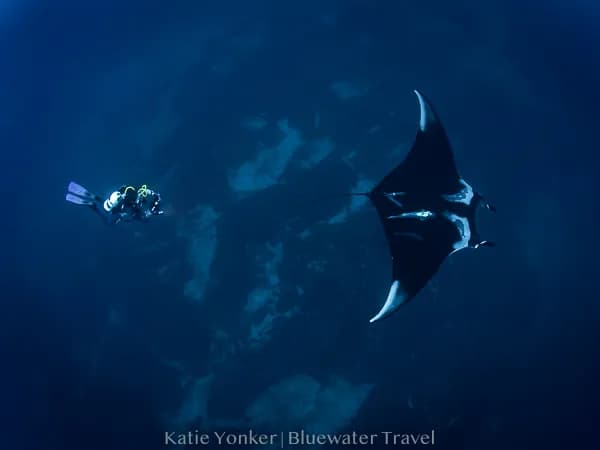Cocos Island Trip Report
On par with the Galapagos and Socorro Islands, Cocos Island National Park is a UNESCO World Heritage Centre and a mecca for all things sharky. Diving here typically wouldnt be described as pretty, as there is virtually no colorful coral, and therefore none of the associated vibrant reef species. But dont be fooled - the waters around Cocos are some of the richest in the world, with Pacific Ocean currents converging to bring all manner of shark species, and a myriad of other pelagics to the island.
Bluewaters October 2015 and November 2016 Group Trips and Workshops to Cocos Island showed us why it's considered one of the best places in the world to dive with sharks. During both weeks the divers had encounters with hammerhead sharks, tiger sharks, Galapagos sharks, manta rays, marble rays, eagle rays, morays, and all the usual cast of fish Coco Island has to offer.
November 2016
We hopped on the shuttle in San Jose and headed out towards the port town of Puntarenas. Traffic was bad due to the long weekend, but we arrived at the boat in great spirits. Our driver was an ornithologist and gave us lectures along the drive about the flora and fauna of Costa Rica. We boarded our liveaboard and motored out of port right away.
The transit to Cocos can take up to 40 hours, so the second day started lazily. Some of us set up our scuba gear and some of us worked on putting our camera setups together, but we spent most of the journey getting to know the other guests onboard.
We woke up on the third day on a boat that was no longer rocking. We had reached Cocos Island. We did our checkout dive at Chatham Bay. It was an easy reef dive maxing out at 50 feet, which allowed all divers to check their weighting and divers who had not dived in years the chance to find their fins again. After the rangers briefing, we headed out to Manuelita Island, a short 3-minute ride via panga (a dinghy boat like a zodiac). It was a little choppy on the surface and a little surgy underwater, but everyone was focused on the shark show in front of our eyes. Dozens of hammerheads and two tiger sharks made multiple appearances. The largest of the tiger sharks was about 15 feet in length and the largest school of hammerheads that swam by was at least 50 strong. What a way to start a dive trip! We returned to the boat with huge smiles on our faces, with six more days of phenomenal diving to come. The third dive of the day was again at the cleaning stations at Manuelita. No tigers or massive schools of hammerheads this time, but everyone still saw individual hammerhead sharks, some as large as 12 feet long.




Day four started at Punta Maria, a good site for Galapagos sharks, and it certainly did not disappoint. There was a constant flow of hammerheads at the cleaning station and when the numbers thinned out, a Galapagos shark made an appearance. Dive two was at Dirty Rock where we descended through a large school of jacks to the cleaning station where hammerheads came in close to check us out. After lunch, we boarded a panga and headed to land to visit the ranger station. Even though fishing is illegal within a 12-mile perimeter around the island, the rangers showed us a garage filled with a years worth of nylon fishing line and hooks they had confiscated. While walking over to the living quarters, we spotted some deer that were introduced to the island by humans about 100 years ago. Back to the boat, and dive three was at Paraja Island, a pinnacle that juts out of the water and drops down to 100 feet. That night we did the first of three night dives, heading to Manuelita Shallows. When we hit the bottom at 45 feet, the blackjacks started their hunt for supper by the beams of our dive lights. Hunting with them was a pack of 50 whitetips. Then suddenly the whitetips disappeared and out of the shadows came a 10-foot Galapagos shark, who swam with us for the rest of the dive, making many passes and coming extremely close to all the divers.
Day five was another four-dive day. We started with a dive at Alcyon, which had a strong current that brought out a yellowfin tuna zipping near the underwater pinnacle. The next dive at Submerged Rock also presented strong current, so we spent most of the dive at an underwater arch where a school of snappers was hanging out. We sighted whitetips sleeping in a crevice and three large marbled rays gliding around. As we made our way up to the safety stop at the end of the dive, we encountered a school of over 200 bigeye jacks. After lunch, we went back to Manuelita Shallows for a third dive. For the fourth dive, we went to Chatham Bay. There were no large sharks, so this time we assisted hundreds of whitetips on their nightly hunt for food. We witnessed a couple of feeding frenzies, one of which ended with fish scale particles everywhere in the water.




Day six started with a bang! Because of bad weather conditions, we dove Dirty Rock and Manuelita again, the two pangas separating and diving at different dive sites. The team at Dirty Rock saw hammerhead sharks, an eagle ray, a large Galapagos shark, and a large school of over 100 hammerheads pass by. The team at Manuelita experienced the best dive of the trip so far, with a giant oceanic manta and dolphins hunting a school of jacks. For our dive at Manuelita, we dropped down 80 feet to the cleaning station and were treated to a continuous show of hammerhead sharks coming so close that one of them bumped into a camera. The last night dive of the trip was done with great anticipation and apprehension. The night dives so far had all been good, but cold! Those that pushed through were rewarded with sharks galore. Hundreds of white tip sharks swarmed in a feeding frenzy for most of the dive, and we ascended after 45 minutes with our mouths wide open.


Dive one of day seven started at Manuelita, where the ocean gifted us with a large school of 50 hammerheads cruising the sandy bottom at 110 feet. After a quick rinse off, we headed into Chatham Bays ranger station. Some of the group went for a hike to the top of the mountain, where friendly pigs enjoyed being hand-fed. We were supposed to dive Alcyon on the second dive of the day, but the current was too strong so we opted to head back to Manuelita. What a choice it turned out to be. We first descended upon a massive school of over 100 bigeye jacks. Since we had great luck at the sandy bottom earlier in the morning, we headed there again and as if on cue, the large school of hammerheads appeared and swam around in circles on the sand, occasionally swimming up the reef and above our heads. As our bottom time dwindled, we ascended to the cleaning station at 65 feet and were treated to a line of hammerheads waiting to be cleaned by barberfish. One by one, the hammerheads swam within a few feet of us, stopped momentarily to be cleaned of parasites, and swam off so the next hammerhead in line could take its turn. This went on for about 15 minutes and we didnt want to leave, but when we reached our safety stop, a massive school of about 100 striped bonito surrounded us. Dive three was a dusk dive. We dove Dirty Rock with limited visibility and light and saw a few hammerheads, a large school of jacks, and an octopus.
Day eight started early at 7 a.m. so we could do four dives that day, two the next day, and start making our way back to Puntarenas to catch the high tide. Panga 2 went to Big Dos Amigos, where the main attraction was a large underwater arch about 30 feet wide at the bottom (85 feet deep); the top of the arch began at 50 feet. Panga 1 went to Small Dos Amigos where they saw hammerheads, Galapagos sharks, and silvertip sharks. When we went to Dirty Rock, the ocean was like an aquarium filled with marine life in a varying cacophony of colors. Yellow striped snappers, red creolefish, silver bigeye jacks, and bluefin trevally each occupied a section of the metaphorical fish tank we were diving in. For the fourth dive of the day, we went back to our favorite dive site, Manuelita. Apart from the usual suspects of hammerhead and Galapagos sharks, we saw the largest yellowfin tuna that we had ever seen. It was about eight feet long and four feet wide and made the hammerhead sharks look small in comparison.








Our last day of diving ended with a bang! Those of us in the Panga 1 team went to Dirty Rock for the first dive and saw the largest school of jacks we have ever seen. The school numbered in the thousands and surrounded us at the top, bottom, and on all sides. A school of hammerheads in the hundreds swam by in the distance. We ended the week with the last dive at Manuelita in 50-foot visibility. Once again we were treated to another hammerhead show at the cleaning station, and on the way back up a large yellowfin tuna kept zipping by us.
What a fantastic week of diving! Some of the dives were challenging with depths of 100 feet and currents, but the group of underwater photographers were good divers and managed to navigate the conditions while handling their expensive and heavy camera setups to capture stunning shots.
Throughout the week we held seminars on various underwater photography topics tailored toward the conditions we encountered and marine life that we saw. As the week progressed, the consistent close encounters with sharks allowed guests to practice and hone their underwater photography skills to get some amazing photos.
All-in-all it was an unforgettable trip filled with fun, friendly times and momentous memories.


Practical Information
Diving Season: Cocos is a year-round destination, however, species sightings will vary slightly depending on when you visit. December - May is the dry season with calmer waters and smoother crossings. The rainy season runs June - November and while visibility is lower, sharks appear in greater numbers due to the increase in plankton. June and July are shoulder months when you may experience both big animals and calm seas, but this can be highly variable.
Skill Level: Large surface swells, surge, strong currents and sometimes low visibility can lead to challenging conditions best suited to advanced divers.
Water Temperature: Between 80-82oF (27oC) in the summer, and dropping to 72oF (22oC) in the winter. Expect thermoclines and temperatures in the 60s (15-19oC) at depth.
Getting There: Cocos Island lies about 340 miles southwest of mainland Costa Rica and is only accessible by liveaboard. Fly internationally to Santamaria International Airport (SJO), San Jose and arrange transport with the boat to Puntarenas where youll embark for the 35 - 40-hour crossing, which can be choppy at times.
Where to Stay: Cocos is uninhabited and liveaboard trips generally visit for 7 - 10 nights. Check out the Aggressor Fleet Okeanos boats that visit through the season.
Non-Diving Activities: Most liveaboard trips include a land visit on the island for a short excursion, however, we would recommend spending some time in Costa Rica before or after your trip. It is one of the best wildlife destinations in the world.
